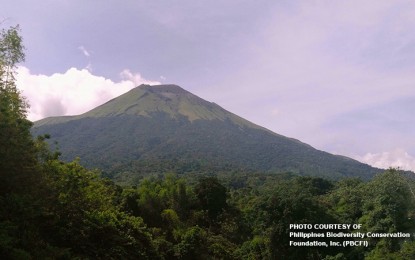
Photo courtesy of Philippine Biodiversity Conservation Foundation, Inc. (PBCFI)
MANILA – The Philippine Institute of Volcanology and Seismology (Phivolcs) has advised people living near Mt. Kanlaon in Negros Island to be vigilant due to the increased volcanic activity in Mt. Kanlaon.
In an advisory issued Saturday night, Phivolcs said 28 volcanic earthquakes ranging from magnitudes 0.7 to 2.2 were recorded between Feb. 11 to Feb. 13. These occurred at a shallow depth of 10 kilometers.
Volcanic earthquakes are caused by movements or eruptions of magma from the volcano.
Sulfur dioxide (SO2) gas emission from the summit crater on Saturday reached an average of 1,130 tonnes/day, the highest recorded this year, following a trend since June 2020 of emissions higher than background levels of 300 tonnes/day, the advisory added.
A slight inflation of the lower and middle slopes has been recorded since June 2020, indicating slow pressurization within the volcano.
Those parameters may indicate hydrothermal, tectonic or even deep-seated magmatic processes occurring beneath the edifice.
"(Mt. Kanlaon) is at alert level 1 (abnormal), but because of the increased volcanic earthquake activity in the past three days, increased gas emission Saturday, and continued slight inflation of the volcano slopes, we issued an advisory as it is more restive now than in past week," Phivolcs director Renato Solidum Jr. told the Philippine News Agency.
He added that this indicates increased possibility of phreatic eruptions (steam-driven explosion).
"Because of this, the public was reminded to be vigilant," Solidum said.
The public is strongly advised to refrain from entering the 4-kilometer Permanent Danger Zone (PDZ) as sudden and hazardous phreatic eruptions may occur without warning.
Pilots are also advised to avoid flying close to the volcano’s summit as materials thrown out from any sudden phreatic eruption can be hazardous to aircraft.
Meanwhile on Sunday, Phivolcs said seven volcanic quakes were recorded during the 24-hour observation period.
Moderate emission of white steam-laden plumes that rose 500 meters was observed. (PNA)
